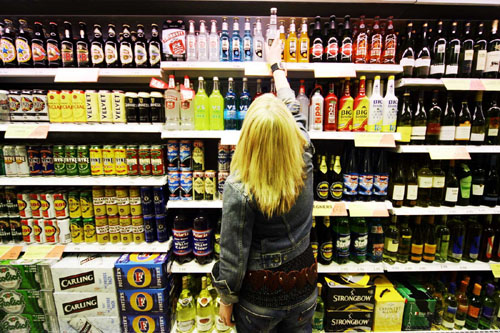PEOPLE in Europe consume more alcohol – 12.5 litres of pure alcohol equivalent per year on average – than in any other part of the world.
How frequently, where and in what context alcohol is consumed influence the effect it has on health. “Alcohol in the European Union”, a new report by WHO co-sponsored by the European Commission, reveals significant sub-regional patterns of consumption and health effects across the European Union (EU).
“Europe’s dubious honour of having double the global average alcohol consumption has clear, recognized health consequences for drinkers, those around them and society,” said Zsuzsanna Jakab, WHO Regional Director for Europe.
Europeans drink more alcohol than people anywhere else in the world
“Yet the take home message from this new report is that the alcohol-related burden on health in Europe is avoidable. For every facet of alcohol consumption, this report provides evidence-based conclusions for policy and practice, and I urge countries to review it carefully.”
Social, cultural, geographic and economic variations in the countries of the EU have led to four distinct country groupings – central-eastern and eastern Europe, central-western and western Europe, the Nordic countries , and southern Europe – with different alcohol consumption patterns and trends.
Although high in all cases compared to the global average, the breakdown of alcohol consumption by subregion reveals the highest consumption in central-eastern and eastern Europe (14.5 litres of pure alcohol per adult, per year), compared to 12.4 litres in central-western and western Europe, 11.2 litres in southern Europe and 10.4 litres in the Nordic countries.
When, however, these figures are weighted against the indicators of hazardous drinking – the proportion of drinking outside mealtimes, drinking in public places and irregular, heavy (binge) drinking – they reveal a different picture.
The Nordic countries have a hazardous drinking score of 2.8 (from a range where 1 is least detrimental and 5 is most detrimental), compared to an only slightly higher score of 2.9 for central-eastern and eastern Europe, and significantly above central-western and western Europe (1.5) and southern Europe (1.1).
Those in eastern countries consumed the most alcohol
Although European consumption of alcohol per capita has remained nearly constant over the past decade, at a sub-regional level, the Nordic countries and eastern Europe have seen an increase in adult consumption, while this has decreased in western and southern Europe.
The standardized alcohol mortality rate per 100 000 population across the EU was 57 for men and 15 for women in 2004.
Yet sub-regional mortality rates varied widely, from 129 (men) and 27 (women) per 100 000 in central-eastern and eastern Europe, to the lowest rate of 30 (men) and 10 (women) in southern Europe.
In addition to these general differences, specific drinking tendencies in the sub-regions influence the causes of death.
Deaths from cardiovascular diseases (excluding ischaemic heart disease) and injuries are proportionally higher in central-eastern and eastern Europe, owing to the high overall volume consumed in these countries, together with irregular heavy drinking sessions.
In the Nordic countries, deaths from mental and neurological disorders are proportionally higher, owing to the high prevalence of alcohol dependence and alcohol-use disorders.
Nordic countries displayed the most dangerous drinking habits
Cancer is proportionally higher in southern Europe, as consumption levels were considerably higher two decades ago and cancer often takes a long time to develop.
As well as doing harm to drinkers themselves, alcohol consumption affects others. Again reviewing data from 2004, over 5500 deaths in men of all ages in the EU and over 2000 deaths in women were attributable to drinking by others. By far the greatest number of deaths and harm were the result of transport injuries, followed by violence as a distant second cause.
Southern Europe shows the greatest proportion of harm to others compared to the total alcohol-related harm for that subregion, as measured by deaths. In central-eastern and eastern Europe, however, calculations indicate that a greater proportion of motor vehicle crashes attributable to alcohol harm the drunk drivers themselves.
The report “Alcohol in the European Union” produced by the WHO Regional Office for Europe and the European Commission analyses alcohol consumption patterns, the harm this causes to the health of both drinkers and non-drinkers, and what can be done to improve the health of Europe’s population.
A number of cost-effective policies have proven that increased taxes, decreased availability and restrictions on marketing are effective in reducing the harmful use of alcohol.
